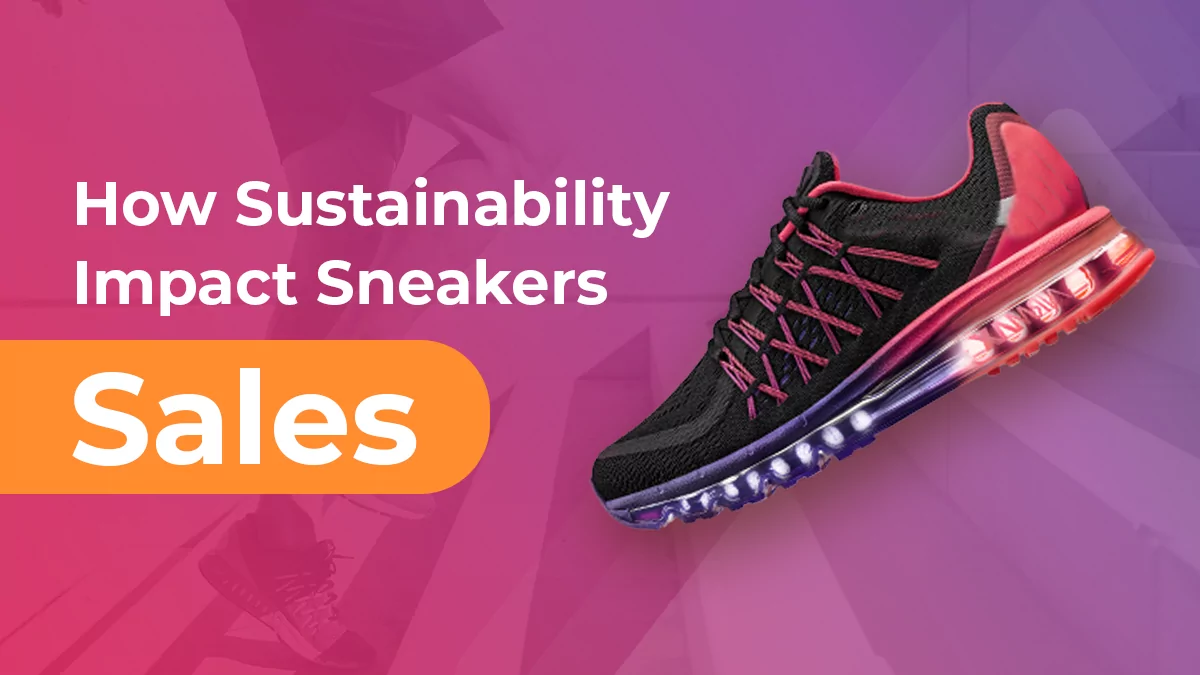
In Revuze’s recent Athletic Footwear Industry Report we pointed Sthat sneakers and athletic footwear are leading the charge on sustainability in the apparel market. While most apparel products are simple, sneakers are different as they are complex and require various parts, compounds, and materials. AThe more “sporty” the shoe is, it usually requires more petroleum-based synthetic materials, making it more difficult to manufacture with sustainability in mind.
According to a recent McKinsey report, consumers, led by millennials and Gen Z, demand sustainability in apparel. For example, the report mentions that online searches for “sustainable fashion” nearly tripled between 2016 and 2019.
As sneaker brands consider these younger consumers as their target buyers, they place both their marketing and product efforts on sustainability.
For example, in 2017, Nike had released shoes made out of “Flyleather”, a material made out of 50% recycled leather fibers and combined with synthetics for durability. Adidas, on the other hand, is incorporating recycled ocean plastics into their shoes.
Recently, Revuze analysts performed a study into the athletic footwear category. Using our Artificial intelligence, they collected over 1,080,000 consumer opinions from different US eCommerce sites that include consumer reviews and ratings from 1/1/2017 to 4/30/2020, covering over 500 different brands (though the top 5 brands accounted for 50% of the discussion volume).
Here’s what we found
Sustainability discussion volume on the rise: Matching the insights gathered by McKinsey’s report research also revealed substantial growth in the discussion volume of discussion towards sustainability.
The most sustainable brands according to the discussion volume are: Adidas, Sketchers, New Balance, Nike and ASICS.
Adidas fans embrace the new line of shoes made of recycled ocean plastic. This entire product line has over 91% positive sentiment read and accolades:
Consumers are frustrated with brands which are not considered environment-friendly:
When looking at the overall sentiment for consumer discussions around the environmental aspects of shoes, the average consumer sentiment is 68% compared to 77% across all consumer discussions for this category.
Diving deeper into the data shows that consumers are very frustrated when they buy a product that doesn’t seem eco friendly or purchase a product from a brand that doesn’t seem to have a clear environmental policy. Here are few representing quotes as an example:
- “I also feel hesitant on buying a brand which is not quite up to date with its ethical and environmental responsibilities”
- “the toxic odor from I’m assuming the dye they used is horrible trying to air them out may have to return them because of it”
- “Don’t recommend these for many reasons but what really guts me is the environmental neglect”
Conclusion
With lockdown increased the public’s awareness of global warming and growing awareness of the impact of humanity on the environment, consumers care about the ingredients used to make the shoes they buy and its overall environmental impact. They also consider whether or not the brand has a clear policy on its carbon footprint and efforts to reduce its environmental impact and recycling plans.
Further strengthening the sustainability case is the increased volume of discussions and the sentiment around footwear, which fails to meet these requirements, which is 12% lower compared to the industry benchmark.
Therefore it comes with no surprise that the overall Sustainable Footwear Market Size is expected to reach USD 11.8 Billion in 2027.
The more sneaker and athletic footwear brands become eco-friendly and product more eco-friendly products, the more interest, and sales they will gain from the new and conscious consumers.
 All
Articles
All
Articles Email
Analytics
Email
Analytics








 Agencies
Insights
Agencies
Insights